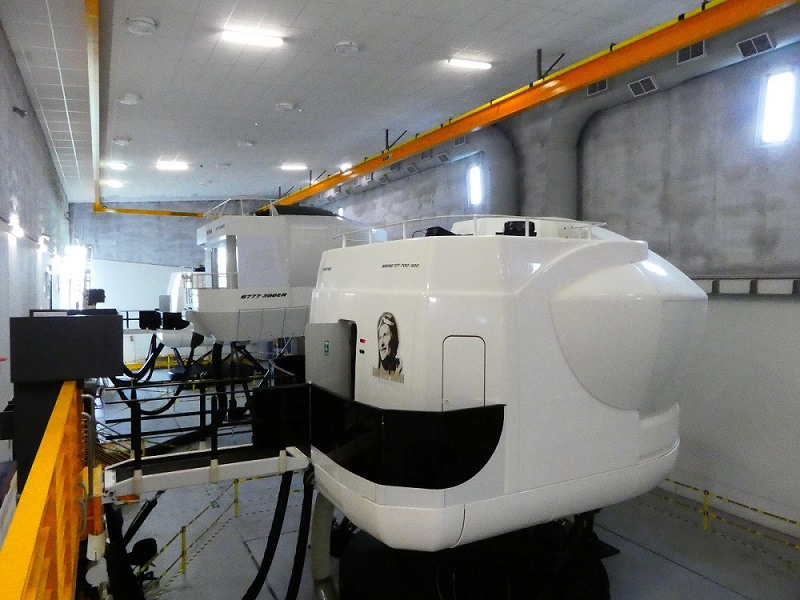
............................................
Flight-Training Simulators
WHAT
IS A SIMULATOR?
Early
simple flight training procedures
During World War II, primitive single-place Link trainers were
state-of-the-art, while airlines used austere Cockpit Procedure Trainers or
CPTs.
These
were fixed mock-ups with pictures of flight instruments, knobs, and handles to
enhance familiarization of flight crews with specific aircraft.
The
introduction of motion in flight-training simulation occurred in the late
1950s, when images from a black-and-white TV camera racing across a model
landscape around an airport were projected onto a screen outside the windshield
of a fixed cockpit replicating the controls and flight instruments of a real
jet airliner.
By the
time the Boeing 747 arrived in 1970, simulators had advanced to having six
degrees of motion, but even then, flight crews passed their initial tests in
simulators and then acquired final flight qualifications in real aircraft taken
out of service for training.
For
perspective, in the first two years of jetliner operations from 1959, training
accidents cost more lives and aircraft than those lost in operational service.
Modern
flight trainers: more real than reality
Modern simulators are exact replicas of the cockpits of
literally every type of commercial aircraft.
Their
realism lets you feel the movement of an actual airplane and experience sounds
and sensations like the nose wheel clunking into locked position below the
cockpit floor after takeoff, or the bump felt on landing as the main gear meets
the runway.
This
ultra-reality, coupled with the advent of the digital glass cockpit allows Zero
Flight Time Training (ZFTT) which evolved in the late 1970s.
Now,
conversion training for pilots transitioning between different aircraft types
can be accomplished in the simulator with final flight checks conducted during
routine revenue flight operations.
Simulators
aid in aircraft design and safety
Aircraft manufacturers also benefit from cockpit simulators by
‘flying’ them for hundreds of hours before a new aircraft design ever leaves
the ground.
This
enables designers to rearrange instrumentation or improve informational
displays, as well as provide detailed data and analysis of the aircraft’s
proposed handling characteristics.
Thus,
millions of dollars are saved by avoiding costly design errors that might only
become apparent after the real aircraft has flown.
Today’s
impressive airline safety record is a direct result of advances in flight
simulation.
In the
early 1960s, Boeing estimated a staggering rate of 60 crashes-per-one million
departures.
Today,
that statistic is only one-per-million departures.
Additional
safety benefits include routine training for such hazards as tire blow-outs,
rejected takeoffs, engine failures and stalls at low altitude, all of which
pose serious dangers to crews flying real aircraft.
Most
importantly, simulators don’t disturb airport neighbors with noise or produce
any polluting emissions, and they certainly don’t burn any fuel!

No comments:
Post a Comment